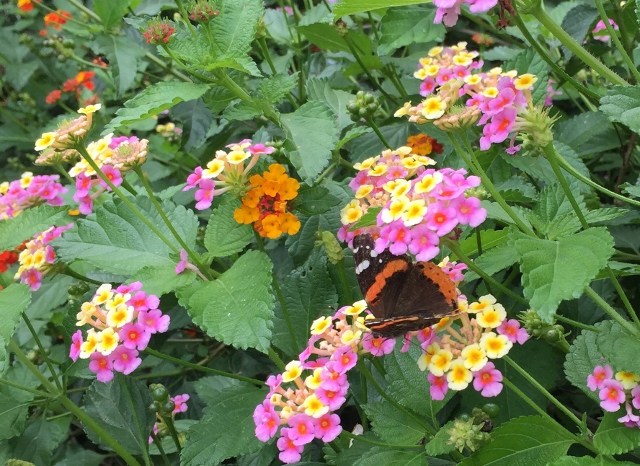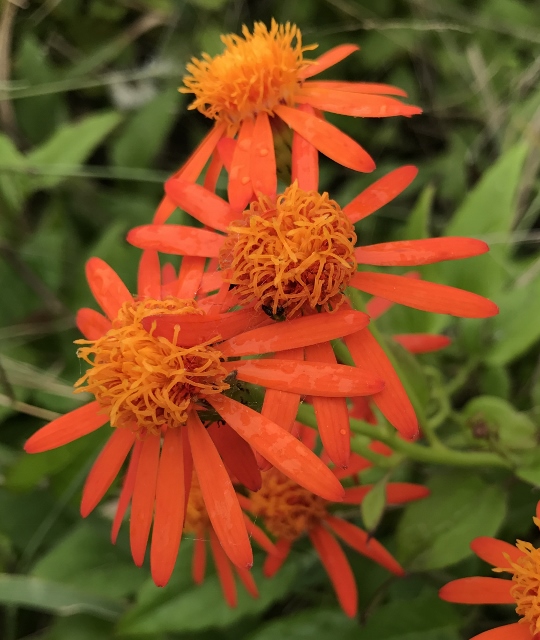

Blooms for cooler weather
By Anita Westervelt, Texas Master Naturalist
Texas lantana, Lantana urticoides, is loving the cooler January weather. It may look like it sports three colors of flowers, however, the corollas, the collective name for all the petals of a flower, open yellow and then turn orange or red.
This plant loves poor, sandy or gravelly soil in hot, dry areas in full sun or light shade. In all but the very southern part of Texas, branches die back in winter and emerge from the roots in spring.
In the Valley, leaves will turn black after a frost. Branches should then be cut back as it flowers on new wood. Trimming during the growing season will make the shrub more compact and allow additional blooming.
With West Indian lantana, Lantana camara, the corollas open yellow and then turn pink. Native to tropical South America, Africa and the West Indies, it has been known in South Texas for more than 100 years.
Velvet Lantana, Lantana velutina, is native to Texas. Blooming more readily in this cooler weather, it has white blooms on smaller flower heads than Texas and West Indian lantana.
Lantanas are excellent nectar sources for butterflies and many birds eat the fruit. Lantana leaves are poisonous to livestock and humans.
Mentioned are three species of lantana, two native and one that’s been in the Valley for a hundred years or so. It is important to know whether a species is native or non-native. Botanically, native plants are those naturally occurring in an area, without human introduction; a plant that is part of the balance of nature that has developed over hundreds or thousands of years in a particular region or ecosystem.
Non-Native refers to plants introduced with human help (intentionally or accidentally) to a new place or new type of habitat where it was not previously found.
As a Texas Master Naturalist, I understand the tremendous benefits of keeping the Valley native and advocate landscaping with native plants to keep our habitat heritage healthy. As a butterfly enthusiast, I do pepper my landscape with some non-native plants. Butterflies will stay as long as they have a food source.
When introducing non-native species in a garden, knowing what to expect is important. Some plants may take over or even inhibit native plants. With Internet research, it’s easy to learn whether plants are compatible or will cause consequences.
For instance, a good nectar plant sporting blooms still in January is the non-native Mexican honeysuckle, Justicia spicigera, a native of Mexico, Central and South America. This plant was introduced much to the delight of our hummingbirds and butterflies. It is moderately drought tolerant, doesn’t mind partial shade and is well-behaved.
Another popular non-native, sporting brilliant orange blooms, is Mexican flame vine, Senecio confusus. Native to Mexico, its most profuse blooming time is November through spring. It can be trained on a trellis or fence or left as ground cover where it will root between the leaf nodes. Mowing the edge will keep it at bay.
It is drought resistant, nearly maintenance free and hardly bothered by pests. A frost will kill it to the ground but it will recover from roots in spring.
Another non-native plant attractive to butterflies and hummingbirds is cape honeysuckle, Tecoma capensis. A large shrub native to southern Africa, when left on its own, it produces runners that can overtake small buildings. Clipping back the runners will help keep it contained.
